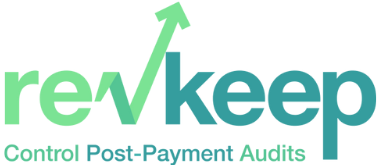Introduction
Understanding the intricacies of RAC audits and the audit process is essential for healthcare organizations. RAC audits, or Recovery Audit Contractor audits, are conducted by independent auditors hired by the Centers for Medicare and Medicaid Services (CMS) to identify and recover improper payments made to healthcare providers. These audits play a crucial role in ensuring the accuracy and integrity of the healthcare payment system.
What is a RAC Audit?
A RAC audit is a retrospective audit process aimed at identifying and correcting improper payments made by Medicare and Medicaid. The audit is performed by third-party contractors known as Recovery Audit Contractors (RACs), who are responsible for reviewing healthcare claims submitted by providers and identifying overpayments or underpayments.
RAC audits focus on various areas such as billing errors, medical necessity, coding errors, and documentation deficiencies. The goal is to ensure that providers are reimbursed accurately for the services they provide while preventing fraud, waste, and abuse within the healthcare system.
The RAC Audit Process
The RAC audit process typically involves the following steps:
1. Prepayment and Post payment Audits
Prepayment audits occur before the healthcare provider receives payment for the services rendered. These audits aim to prevent improper payments upfront. On the other hand, post-payment audits are conducted after the provider has received payment and involve reviewing claims retrospectively for potential overpayments or underpayments.
2. Selection of Claims for Review
RACs use various data analysis techniques to identify claims that have a higher likelihood of containing errors or improper payments. These claims are then selected for review, and the RAC requests additional documentation from the provider to substantiate the services billed.
3. Documentation Review
The RAC carefully examines the documentation submitted by the provider to determine if the services billed were medically necessary and properly documented. This includes reviewing medical records, treatment plans, progress notes, and other relevant documentation.
4. Overpayment Identification
If the RAC identifies any overpayments, they will notify the provider and provide detailed information on the specific claims and services in question. The provider then has the opportunity to submit additional documentation or appeal the findings.
5. Repayment or Appeal
If the provider agrees with the RAC’s findings, they are expected to repay the overpayment amount within a specified timeframe. However, if the provider disagrees with the findings, they can initiate the appeals process to challenge the audit results.
How to Navigate the RAC Audit Process
Dealing with RAC audits can be complex and challenging, especially for healthcare organizations without the necessary expertise and resources. To navigate the RAC audit process successfully, consider the following:
1. Stay Informed
Keep up to date with the latest CMS guidelines, policies, and updates related to RAC audits. This ensures you are aware of any changes that may impact your billing and documentation practices.</Paragraph>
2. Conduct Internal Audits
Perform regular internal audits to identify potential compliance issues, billing errors, and documentation deficiencies. By proactively addressing these issues, you can minimize the risk of audit findings and potential overpayments.<
3. Improve Documentation Practices
Ensure that your documentation accurately reflects the medical necessity of the services provided. Proper documentation is crucial for supporting the services billed and reducing the chances of audit denials or recoupments.
4. Establish an Appeals Process
Develop a robust internal appeals process to handle audit findings that you believe are incorrect or unjustified. It’s essential to understand the appeals process and adhere to the specified timelines for submission.
RevKeep: Streamlining RAC Audits
Dealing with RAC audits can be time-consuming and overwhelming, but with the right tools and solutions, you can simplify the process and increase your chances of success. RevKeep is an easy-to-use software solution designed to streamline RAC and private payor audits.
RevKeep helps Revenue Cycle Management (RCM) teams by centralizing audit-related documentation, automating workflows, and providing real-time visibility into the audit process. With RevKeep, you can efficiently manage audit requests, track documentation status, and collaborate seamlessly with your team.
By using RevKeep, healthcare organizations can significantly improve their audit readiness, reduce the administrative burden associated with audits, and increase their likelihood of winning RAC and private payor audits.
Conclusion
Understanding the RAC audit process is crucial for healthcare organizations seeking to ensure accurate reimbursement and compliance. By following best practices, staying informed, and leveraging tools like RevKeep, you can navigate the complexities of RAC audits with confidence and increase your chances of success.
Unlock the secrets of RAC audits and simplify your audit management with RevKeep. Visit revkeepsoftware.com to learn more about how RevKeep can help your RCM team streamline RAC and private payor audits and win more of them.


